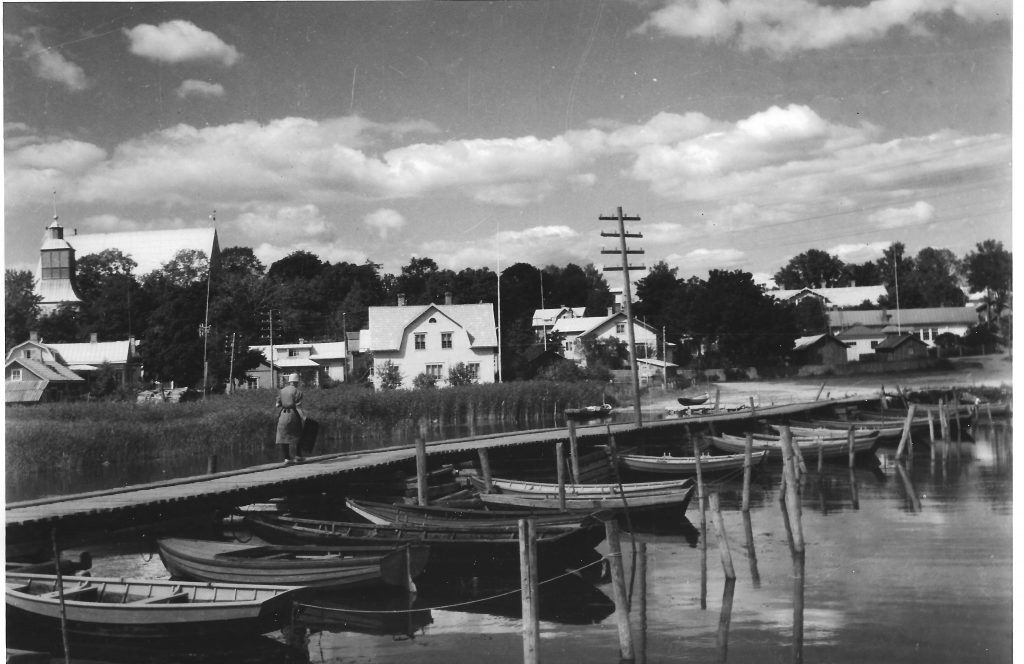The cottage was a used as quarter by several remote farms in Pargas until 1943. The dean Nilsdorff and magistrate M. Malmqvist are among the many people who used the cottage during their visits to Old Town. The shoemaker Wilhelm Strandblom, his wife Emilia and her sister Fredrika resided in the cottage in the early 19oos. Fredrika was both blind and deaf, but it was said that she could identify visitors by scent.
The house was originally built by the parish shoemaker Christian Strandblom, in the 1820s. The timbered cottage is divided in a chamber on one end and kitchen and hallway in the other. The cottage was restored in 1890’s style by Walter Johansson, who also had a antique store next door. The loom in the kitchen, the desk, two paintings and a few household items belonged to the Strandblom family . A photograph of Emilia Strandblom is hanging above the couch.
It was formerly a common duty to attend church services on Sundays. Church journeys were often cumbersome and difficult. Church goers traveled by boat, on foot or by horse cart. The were no hostels or hotels at the time so many houses on Malmen provided accomodation to church goers. After church people would run errands in town, perhaps visit the For an example, they visit the seamstress or purchased groceries from the many stores on Malmen.
Melia´s cottage and church goers.
Emilia Strandblom, commonly known as Melia, received guests every Sunday. Up to twenty church goers at a time would visit the little cottage and all visitors were served with coffee. Church goers who visited Melia never came empty-handed. They brought fresh milk, butter, eggs, cheese made of cow colostrum and seed-potatoes. Melia had a small potato field in the garden and she also had a small sheep barn and stables for the horses of church visitors. The sheep had to be rowed to nearby island for grazing every summer. The well on the property dried up frequently and Melia had to keep collectin rain water in a barrel. Melia died in 1942.

Poor and narrow countyrside roads made it difficult to travel to church and it was therefore important that travelers had an opportunity to rest and eat before the starting the journey home. Boats were an important means of transport and they were moored in Snäckviken or on the beaches of the narrow channel.

Church goers from the western part of Pargas parish arrived by boat in the Sysilax inlet and walked from there to the church. Several disputes and quarrels arose between local landowners and travellers as the customary paths to church often went through growing crops. In some cases formalized roads could also suddenly be blocked, which was the case with a local farmer in Sysilax who erected a barn across the church road in 1788.

Travel became easier during winter across frozen stretches of sea ice. The roads would also cross over land and sometimes winter travelers were guilty of vandalism when they tore up fences and corrals in their path. Each farmer was also obliged to plow the segments of road that ran through his property and to mark nearby ice roads with pine and spruce boughs. Weak ice was a threat to all travellers and it was not uncommon that people drowned when the ice broke under them.


